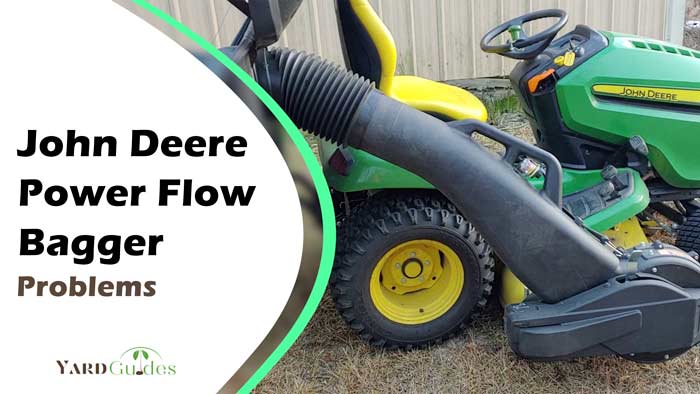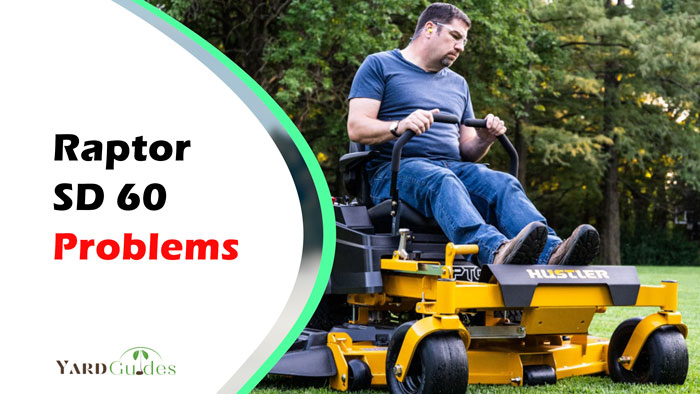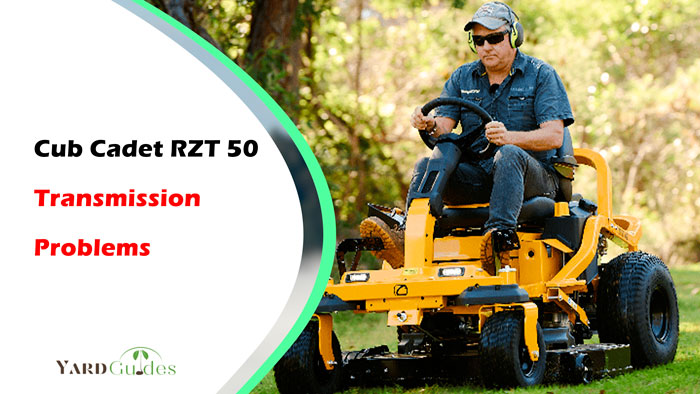The power flow bagger can encounter problems from time to time. And this can affect its performance and efficiency. These issues can be frustrating, especially if you’re spending a lot of time and effort trying to get your lawn looking its best.
So what are the John Deere power flow bagger problems? The most common issues associated with your mower’s bagger are
- Power flow indicator problems
- Clogging with grass clippings or other debris
- Bag tears
- Poor collection
- Worn or damaged parts
- Belt slippage
In this article, we’ll take a closer look at some of the common causes of the John Deere Power Flow bagger and how to fix them. Let’s dive in!
The table below shows the overview of power flow bagger difficulties and solutions.
| Problems | Solutions |
| 1. Power flow Indicator | Use a small brush to clean the tubes and remove any debris or grass clippings |
| Replace the damaged indicator | |
| Replace the damaged or broken sensor | |
| Adjust the Power Flow indicator to align correctly | |
| 2. Clogging | Wait and mow when the grass is dry |
| Replace worn bags | |
| Make sure to clean the bagger regularly and clear any obstructions in the chute | |
| Adjust the mower blade to leave shorter clippings | |
| 3. Bag tears | Purchase bags that are compatible with your specific model of the bagger |
| Replace worn-out bags | |
| Refer to the manufacturer’s recommendations for the maximum amount of debris that the bags can hold | |
| Ensure the area is clear of any debris that could cause tears | |
| 4. Poor collections | Sharpen the blades yourself or take them to a professional for sharpening |
| Use a long tool to clear out any debris that’s blocking the flow of clippings | |
| Adjust the height of the mower deck | |
| Replace with new bags that are designed for your specific model of the bagger | |
| 5. Belt slippage | Use a brush or compressed air to clear debris from the belt area |
| Adjust the tensioner as necessary to ensure the belt is tight enough | |
| Disassemble the bagger and reinstall the belt according to the manufacturer’s instructions |
Guide to Causes And Solutions For John Deere Power Flow Bagger Problems
Despite being an incredibly useful tool, let’s look at the common issues associated with John Deere Power flow Bagger in detail.
1. Power Flow Indicator Problems
The Power Flow indicator is an essential part of the Power Flow bagger system. It tells you when the bag is full and needs to be emptied. However, sometimes the indicator may not work correctly, and it may show a full bag even when it’s not. These can be due to reasons like:
- Clogged Tubes
- Damaged Indicators
- Broken Sensors
- Misaligned Indicators
Solutions
Here are some efforts you can take to fix the problem.
- Use a small brush to clean the tubes and remove any debris or grass clippings that may be blocking the airflow.
- Inspect the Power Flow indicator and check for any signs of wear and tear or damage. If the indicator is damaged, you may need to replace it.
- Replace damaged or broken sensors.
- Adjust the Power Flow indicator. Check the installation manual to see how to align the indicator correctly.
2. Clogging Problems
One of the most common problems with power flow baggers is that they can become clogged with grass clippings or other debris. This can significantly reduce the efficiency of the bagger and lead to frustration for users.
There are several reasons why your John Deere Power Flow bagger may be clogging.
- Wet Grass or Leaves
- Long Grass Clippings
- Obstructions
- Damaged Bags
Solutions
Let’s take a look at how to fix them:
- Wait and mow when the grass is dry. If you have to mow when the grass is wet, try using a higher setting on your mower to leave longer grass clippings.
- Stop the mower and clear any debris in the chute before you continue mowing out.
- Replace worn-out bags on your John Deere Power Flow bagger. Make sure they are securely attached and that there are no holes or tears. After each use, remove any debris or clumps of grass from the bags and chute after each use.
- Adjust the mower blade to leave shorter clippings that are less likely to clog the chute.
3. Bag Tears Problems
Over time, the collection bags can become worn and damaged, leading to tears or holes that allow grass and debris to escape. Common causes why your John Deere Power Flow bagger bags may tear:
- Normal Wear and Tear
- Over filling
- Sharp Objects
- Poor Installation
Solution
Below is the solution to the problems.
- Make sure you purchase bags that are compatible with your specific model of bagger. If the tear is small, you may be able to reinforce it with duct tape or another strong tape.
- Do not exceed the amount of debris the bags can carry. However, if you’re unsure of the quantity, refer to the manufacturer’s recommendations for the maximum amount of debris the bags can hold.
- Before you start mowing, make sure the area is clear of any debris that could cause tears. If you do encounter debris while mowing, stop and remove it before continuing.
- Ensure the bags are installed properly and are not rubbing against any parts of the bagger that could cause tears. Refer to the manufacturer’s instructions for proper installation.
4. Poor Collection
This is when the attachment fails to effectively collect grasses and other debris as you mow your lawn. Here are reasons why your John Deere Power Flow bagger may not be collecting debris effectively.
- Dull Blades
- Clogged
- Worn Bags
- Uneven Terrain
Solutions
Here are some ways to address poor collection issues
- You can either sharpen the blades yourself or take them to a professional for sharpening.
- Use a stick or other long tool to clear out any debris that’s blocking the flow of clippings.
- Replace with new bags that are designed for your specific model of bagger.
- Adjust the height of the mower deck. Try raising the deck slightly to allow more space for clippings to enter the bags.
5. Belt Slippage
Belt slippage occurs when the belt that drives the bagger’s fan slips or fails to engage, causing the bagger to stop collecting debris. Belt slippage can be caused by a variety of factors, including
- Worn Belt
- Loose Tensioner
- Debris Buildup
- Incorrect Installation
Solutions
Here are some ways to fix belt slippage:
- Replace with a new one that is designed for your specific model of the bagger.
- Check the tensioner pulley and adjust it as necessary to ensure the belt is tight enough.
- Use a brush or compressed air to clear debris from the belt area.
- Disassemble the bagger and reinstall the belt according to the manufacturer’s instructions.
Final Words
We wrap up our conversation about potential problems with the John Deere power flow bagger here. It’s important to remember that regular maintenance and proper usage can go a long way in preventing many of these issues.
Whether you’re dealing with clogs or worn parts, taking the time to properly clean and maintain your power flow bagger can help ensure that it continues to operate at its best. And if you do encounter problems, don’t hesitate to consult the manufacturer’s manual or seek the advice of a qualified service technician.



